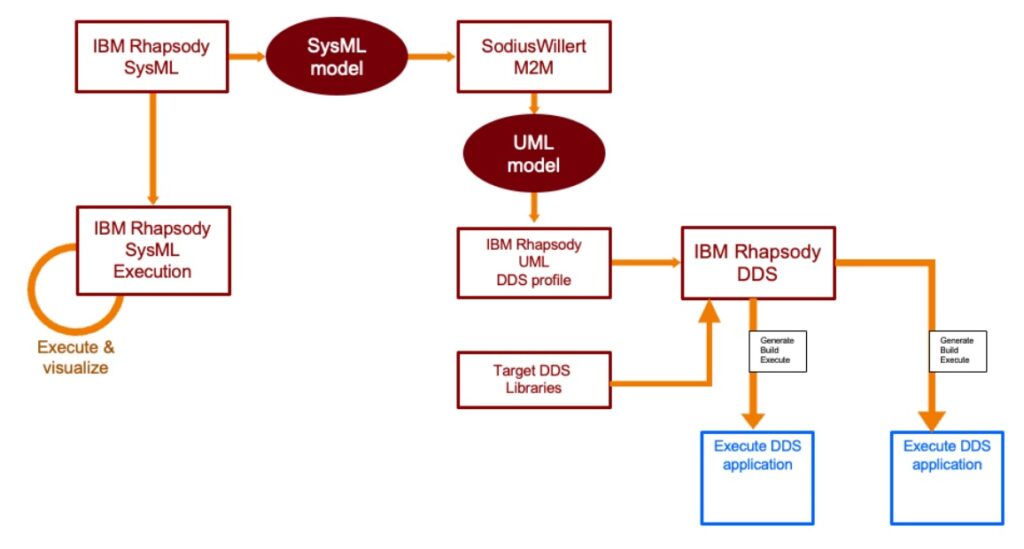As embedded and distributed systems become increasingly complex, ensuring reliable, real-time communication is no longer optional—it’s essential. That’s where the integration of Data Distribution Service (DDS) into IBM Rhapsody changes the game.
At SodiusWillert, we’re enabling teams to build smarter, more connected systems by combining DDS with model-based systems engineering (MBSE). Here’s a breakdown of what DDS is, how it works with Rhapsody, and why it’s a major win for industries like aerospace, automotive, defense, and industrial IoT.
🧠 What is DDS?
Data Distribution Service (DDS) is a middleware standard defined by the Object Management Group (OMG), designed for scalable, real-time, and reliable data exchange in distributed systems. It uses a publish-subscribe communication model—perfect for:
- Autonomous vehicles
- Aerospace and defense systems
- Industrial automation
- Internet of Things (IoT) and cyber-physical systems
Key features of DDS:
- ⚡ Low latency and deterministic communication
- 🔁 Decentralized architecture (no single point of failure)
- ✅ Built-in Quality of Service (QoS) management for reliability
💡 Why Combine DDS with IBM Rhapsody?
IBM Rhapsody is a powerful MBSE tool for designing and simulating embedded systems. Integrating DDS into Rhapsody brings multiple benefits:
1. Real-Time Simulation & Execution
Model systems in SysML or UML and simulate live DDS-based communication within Rhapsody. Perfect for systems where timing and data flow are critical.
2. Seamless Distributed Design
Define DDS publishers and subscribers directly in your Rhapsody models. Automatically generate DDS-compatible code for distributed execution.
3. Earlier Testing & Validation
Simulate DDS networks inside Rhapsody before deployment to reduce integration risk—vital for mission-critical domains.
4. Industry Standards Support
DDS is a core part of frameworks like AUTOSAR, ROS 2, and FACE. With DDS integration, Rhapsody projects stay compliant and future-proof.

🔧 How It Works
Using the SodiusWillert DDS integration for IBM Rhapsody, here’s how the workflow looks:
- Model your architecture in SysML or UML using IBM Rhapsody
- Use SodiusWillert M2M to transform SysML to UML
- Apply the DDS profile in Rhapsody
- Generate DDS-compliant source code
- Integrate with your target DDS libraries
- Build and execute your DDS applications
- Visualize results directly in Rhapsody
This approach enables a full MBSE cycle from modeling to real-time distributed execution.
🌍 Real-World Benefits
Whether you’re building autonomous vehicles, avionics systems, or industrial control software, DDS in Rhapsody provides:
- 📉 Reduced development risk
- 🧪 Testing before hardware is available
- 🔁 Faster development cycles
- 🛡️ Improved system robustness and reliability
🔎 Learn More
Want to dive deeper into DDS modeling with IBM Rhapsody? Need help setting up your DDS development environment?
👉 Contact us at SodiusWillert for a demo or expert advice.
Based on insights from a recent LinkedIn post by SodiusWillert Deutschland, this article highlights our commitment to advancing model-based engineering with real-time communication support.
Happy Distributing with Rhapsody!!
Walter van der Heiden email://walter@sodiuswillert.com

Leave a Reply